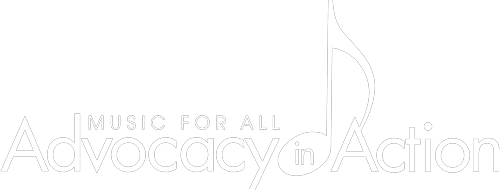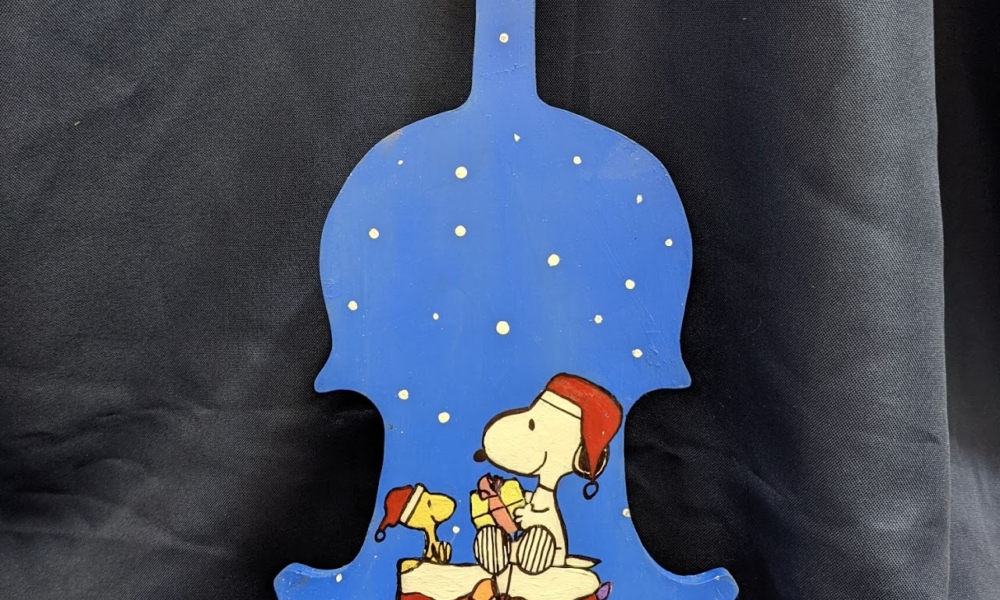“Painted Fiddle Project”
Richland School District Two – Blythewood High School
Blythewood, SC
Description
The Painted Fiddle Project utilizes a creative effort to raise money for the orchestra program at BHS through the sale of painted fiddles. Orchestra students are provided wooden fiddle cutouts. Then, students design, sell, and partner with the community. At each BHS Orchestra Concert, 10-12 fiddles are auctioned. The project also creates fiddle ornaments that are sold year-round. All proceeds are used to purchase necessary equipment, sheet music, and supplies for the program. Each year the Painted Fiddle Project also helps fund a scholarship for a deserving local student to attend the University of South Carolina String Project Summer Camp.
Objectives
Objective 1: To teach students to advocate for their individual art program (orchestra)
Objective 2: To encourage students to lead by example and contribute above their fair share using the wooden fiddles to raise monies for the orchestra program
Objective 3: To promote BHS Orchestra in the community and school
Objective 4: To supplement the orchestra budget in addition to the booster budget
Objective 5: To develop an annual fundraising plan with multiple fundraising events
Objective 6: To encourage and achieve high participation rates from orchestra students
Target Audience
One unique aspect of this fundraising venture is that anyone can be the target audience. For example, Marvel and cartoon fiddles often appeal to the younger concert attendees who then ask their parents to bid on the items. High school students are also targeted with fiddles that reflect campus life, school functions, the Senior class, and other concepts. Adults are targeted as there are fiddles with more complex designs, themes, and beautiful decor. Often, the community bids on fiddles and then displays them in their businesses.
Timeline
- In the summer, Julie Anne Russell (Orchestra Director at Blythewood High School) and her father, Jim Wilson, cut out wooden fiddles.
- During the first few weeks of school, students are given a bare wooden fiddle.
- Students work on the fiddles at their own pace outside of school. They must have an approved design before painting the fiddles.
- Once approved, students paint fiddles. Local artists are also given the opportunity to paint fiddles.
- 10-12 fiddles are auctioned off at Fall/Winter concert.
- 10-12 fiddles are auctioned off at the Spring concert.
- Monies are utilized as needed to purchase necessary equipment, sheet music, and supplies for the program.
- In March, scholarship application opens for deserving students.
- In May, Painted Fiddle Project helps fund a scholarship for a deserving local student to attend the University of South Carolina String Project Summer Camp.
Overview of Planning and Execution
The Painted Fiddle Project originates with the creator, Sherry Trusty. She began this project in 2009 while her daughter was in the Blythewood High School Orchestra. She is still an active artist in the community. Time commitment: 5 hours weekly
Fiddles are cut by Julie Anne Russell (Orchestra Director at Blythewood High School) and her father, Jim Wilson. Time commitment: 15+ hours plus the purchase of the lumber.
Student Leadership creates designs and oversees execution of auction. Time commitment: 1-2 hours weekly during their leadership time.
Tools and Resources
The wooden fiddles, the paint supplies, the parent and Booster organizations, the community, social media accounts, school newsletters, the district painted fiddle exhibit, and a Painted Fiddle exhibit at the Violins of Hope concert at the Kroger Center for the Arts in Columbia, SC,
Marketing and Promotion
Because this is a student leadership-led fundraiser, the students promote the silent auction. Social media is the main marketing tool with advertisements on Facebook, Instagram, Google sites, YouTube, and an article in The State newspaper. Students are always on social media; therefore, the social media campaign is designed to market not only the final product but the process of the Painted Fiddles. Additionally, The State newspaper article helped draw attention to the yearly fundraising effort and brought in additional community members to the concert where the fiddles are auctioned.
Costs
Mrs. Russell (the orchestra director) and her father Mr. Wilson donate the lumber. Paint supplies are provided by the school; therefore, the entire project is for profit with little to no expense.
Challenges/Obstacles
The Painted Fiddle Project is the main orchestra fundraiser every year for the BHS orchestra program. The greatest challenge came during the Covid years because students were struggling with social and emotional issues like never before. The Fiddle Project was adapted that year so that students designed fiddles to express how they were feeling. The fiddles provided an outlet, and the outcomes were fiddles painted with raw emotion, sadness, and pain. These particular fiddles were not auctioned but were used in a Violins of Hope exhibit at the Koger Center for the Arts. In 2022-2023, the auction returned.
Success/Effectiveness Measurement
The Painted Fiddle Project is effective because it is student-led and student-centered. Students get to diegn the fiddle based on where they are in the world at that given moment. Then, they get to see their artwork displayed in various locations around the Blythewood community, the state, and even the country. The data that supports the effectiveness measurement is that the Painted Fiddle Project raises enough money each year to supplement the monies given by the school. Additionally, a scholarship to the USC String Project Summer Camp is fully supplemented by the Fiddle Project.
Community Impact
The Painted Fiddle Project has brought attention to the orchestra program at Blythewood High School. Fiddles ahve been given to School Board Members, Superintendents, and other visitors to the Richaldn Two music community. Often, the orchestra concerts are a full house, largely in part to the silent auction of Painted Fiddles. With arts integration, social and emotional learning, and arts advocacy, the Painted Fiddles are a win-win for all involved.
Advice for others?
Make sure that you allow the initiative to be student-led with adult supervision. Some students choose to keep their fiddles because they are emotionally attached. Start small and use your community artists and visual art faculty for guidance.





